Introduction
Since the outbreak of the Coronavirus pandemic, China has shown increasing irredentist tendencies. From the South China Sea to its South and Central Asian neighbours, Chinese territorial encroachment has created fissures in bilateral relations. Being the source of the pandemic, China has faced severe criticism globally. China’s mishandling and dissemination of misinformation about COVID-19 had already resulted in the loss of allies in the West. China began to actively pursue medical diplomacy to build a positive image of the country worldwide. Concurrently, propagation of petty agendas against its neighbours continued to happen. Earlier it was Kazakhstan that faced Chinese questioning its territorial integrity and false propaganda of spread of an ‘Unknown Pneumonia’ in the country. Tajikistan is the latest victim of China’s land grab tactics.
Recently, major propaganda was instigated between China and the Republic of Tajikistan regarding alleged Chinese claims on Tajikistan’s Pamir region. An article titled “Tajikistan initiated the transfer of its lands to China, and the lost Pamir Mountains were returned to their true owner” was frequently published in the state controlled Chinese media. This was written by nationalist historian Chu Yao Lu, who made these claims based on Chinese sources. It neither has the opinion of Tajik historians, nor references to other relevant historical documents. The article was reprinted at intervals of several days on two of the most popular websites in the PRC.1 There is already a clear apprehension amongst the Central Asian countries about a greater dependence on China. Scandals like this seriously fuel those anxieties.
Three of the Central Asian Republics (CARs), Kazakhstan, Tajikistan, and Kyrgyzstan, share about 2800 km of border with China’s north-western province, Xinjiang.2 With the collapse of the Soviet Union (SU), these post-Soviet independent states inherited the territorial disputes pending between Tsarist Russia and the last of the Chinese dynasties, the Qing Empire. The apprehension concerning the volatile Xinjiang region compelled China to settle its territorial disputes with the CARs, including Russia. Subsequently, a tri-national commission named Shanghai Five was created in 1996 with a Russian chairman that later became the Shanghai Cooperation Organisation (SCO).3 The disputes were finally settled in 2011, with China getting some portion of the land it claimed in those countries. China accepted this unusual concession in return for support from Central Asia governments in managing the Uyghur problem.4
China+ C5: New format for Multilateral Engagement
With the outbreak of the pandemic in Central Asia, China helped CARs in their fight with the virus. Simultaneously, China also promoted petty agendas in the region as well. Considering the vulnerability of the situation, the Chinese Foreign Minister (FM) Wang Yi launched a new type of multilateral arrangement in the region. Within this framework, a virtual meeting of the five Central Asian foreign ministers with their Chinese counterpart was held on July 16. He thanked the Central Asian representatives for matching their voices on the issues of Hong Kong and Xinjiang, which are major concerns to China.
In the meeting, Wang promised to accelerate cooperation with Central Asia in three specific areas, i.e., trade, medical aid, and security. The last area is significant as, after establishing itself as a significant economic power in the region, Beijing is eying for leverages in the security domain. This meeting can also be considered the consequence of a recent border dispute between India and China, followed by new Chinese claims on Bhutanese territory. So, when Chinese FM stated that “We have successfully resolved the boundary problem left over from history and made the common boundary a symbol of friendship and a bond of cooperation,”5 he tried to reassure his counterparts in bordering Kazakhstan, Kyrgyzstan, and Tajikistan.6 However, a few days later, the article about Chinese false claims on the Pamir region of Tajikistan was frequently circulated in Chinese media, which enraged Tajikistan and Russia as well.
Why is Pamir Significant?
China’s border issue with Dushanbe was settled in 2011, which supposedly ended the century-old disagreement over the disputed territory. Negotiations over the largest contentious border segment ended in 2002 after signing a supplementary bilateral agreement.7 According to the agreement, Tajikistan had to surrender around 1,100 square km of land in the Pamir Mountains to China.8 The ceded land represented about 0.8 percent of the country’s total area of 143,100 square kilometres. Tajik Foreign Minister, Khamrokhon Zarifi, hailed the border deal as a “great victory” for Tajik diplomacy, considering that China had previously claimed about 20 percent of the Pamir region.9 Tajikistan is the poorest of five former Soviet republics in Central Asia. Beijing has given favourable loans to Tajikistan and has also invested millions of dollars in the country.
Having received some portion of territorial concessions it wanted in 2011, China has offered security assistance to Tajikistan as an alternative of acquiring large shares of Tajikistan’s raw materials sector. The Pamir region of Tajikistan shares a border with Afghanistan. Dushanbe and Moscow initially welcomed China’s minimal presence in the region as a means of containing Islamist forces in Afghanistan. However, China’s ever-increasing presence in Pamir eventually raised concerns. Beijing’s intensified attempts of putting in place arrangements under which it will soon have military bases across Central Asia is a major reason to worry.10 The Washington Post in February 2019 reported about the possibility of a Chinese military base in Kyzylrabot in Gorno Badakhshan Autonomous Oblast (GBAO) in Tajikistan, approximately 12 km from the Wakhan Corridor and 30 km from the Chinese border.11
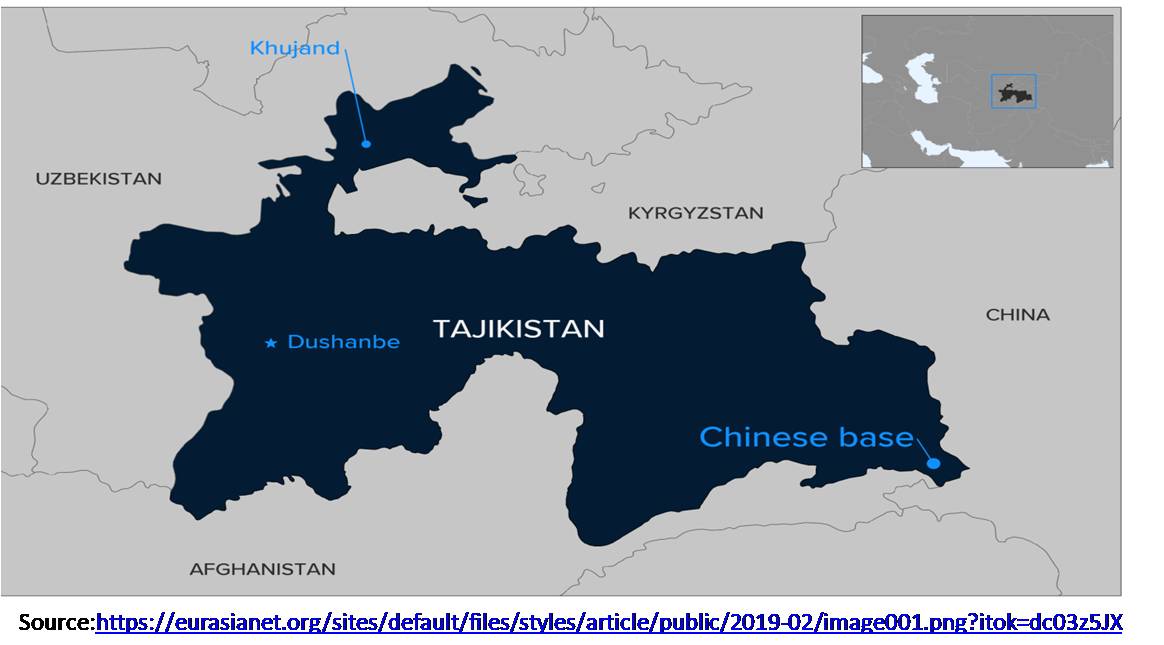
As of now, China owns over half of Tajikistan’s external debt. It is around 35.9 percent of the country’s GDP. In the past, Tajikistan has paid off debts to China by ceding mining rights. The popular perception prevailing in China might indicate that Pamir may be the next. It is already publishing articles to push this narrative.12
Chu’s article has further aggravated the fears regarding Chinese entrapment. China has also opened an airport in Taxkorgan (Tashkurgan), in Xinjiang near the borders of Afghanistan and Tajikistan. The Tashkurgan city is the last famous destination on the Karakoram highway before it enters Pak-Occupied Kashmir (PoK). Therefore, the construction of a Chinese airport is also a matter of concern for India. It is the first such airport near the Gorno- Badakhshan region, which will give China new access to the peoples and natural resources of this much-contested area. China claims that Tashkurgan airfield is intended to promote tourism stands superficial, given the sparse number of Chinese travel to Tajikistan as a whole, let alone to the Badakhshan (20,000 last year).13
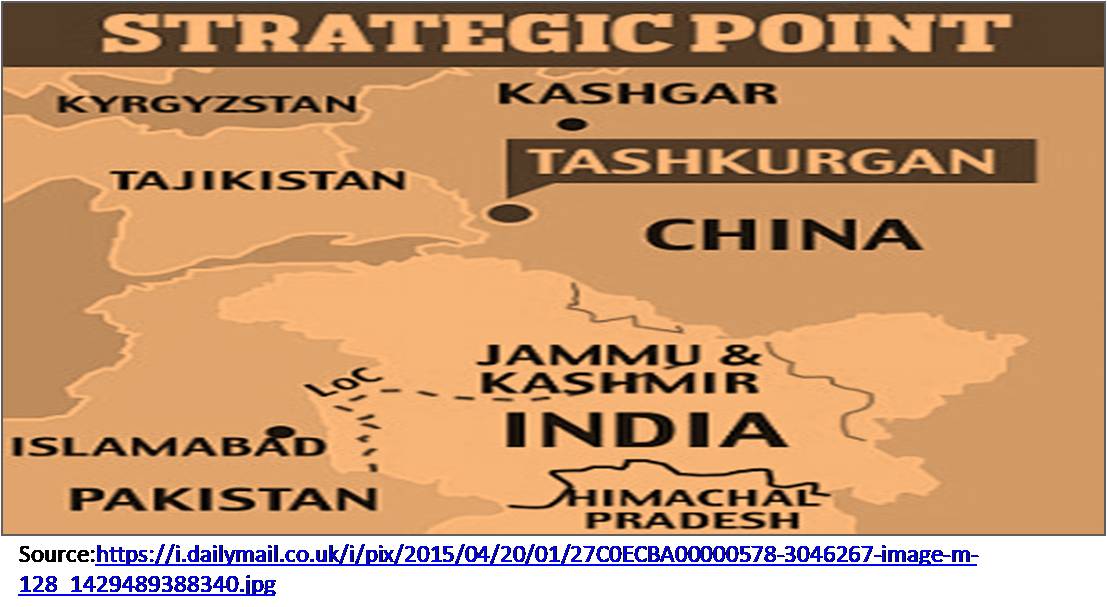
China held many joint anti-terrorism military exercises with the Republic of Tajikistan. The latest Sino-Tajik joint military exercise was held in Tajikistan’s GBAO region in August 2019. Tajik air-defence and ground forces participated in this joint exercise. Earlier, the two countries held similar exercises and training in Eastern Tajikistan in 2006, 2015, and 2016 respectively. Also, in 2016, China, Tajikistan, Pakistan, and Afghanistan formed a “Quadrilateral Cooperation and Coordination Mechanism in Counter-Terrorism.”14 These steps provide evidence of China’s direct involvement in the region’s security and economic issues. The articles like Chu Yao Lu further aggravate fears locally as well as among the allies such as Russia about Beijing’s laying the groundwork for facilitating smooth movement of Chinese troops into the region sometime in the future.15
China’s claims on Pamir Region in Tajikistan
In the contested article, the author states that at the end of the last ruling dynasty in China (Qing dynasty, 1644-1912), some historical territories were separated from China under pressure from the West. And after the creation of the newest Chinese state in 1911, the first task of the authorities was to get back the lost lands. “Some of the lands were returned, others remain under the control of neighbouring countries. One of such very ancient regions is the Pamir, which was outside China for 128 years due to the pressures of world powers,” claims Chu Yao Lu. He also mentioned that ‘world powers’ imply Russia and Great Britain.16
The author further adds that with the disintegration of the USSR, it became achievable to retrieve lost territories. He says that the Chinese aid to Tajikistan created favourable situation that the Tajik side desired to return the lost lands to Beijing. “In 2010, negotiations were completed, and China received 1,158 sq. km of their lost lands,” writes the journalist-historian.”17 The author also notes that the official Tajik media always mentioned about 1100 sq. km. of land being transferred to China instead of 1158 sq. km.18
The alleged claim made by Chinese historian is not more than propaganda. But it has questioned the territorial integrity and sovereignty of Tajikistan. While covering this issue, the Chinese media has solely relied on Chinese historical sources, and have never mentioned that other historical documents are existing relating to the same issue. For example, among many famous historians, academician Rakhim Masov, hold an opposite opinion on Chinese claims.
Tajikistan’s Response
After the article filtered into Tajik-language media, on July 22, First Deputy Foreign Minister Noziri Khusrav called China’s ambassador to Dushanbe, Liu Bin, to complain about it. It is a significant development as Central Asian states often refrain from raising their voices against China. He said that China should censor such falsified accounts of history. Adding to this, Tajik Minister said that “the parties must take the necessary measures to prevent the publication of such materials in the media.”19 Consequentially, the article disappeared from major Chinese blogging platforms such as Baidu, though the Chinese Embassy readout did not mention it.20
Even after three decades since the fall of the Soviet Union, Russia still has a considerable influence on Central Asia. Both Dushanbe and Moscow understand that Chinese investment in the Pamir region of Tajikistan is indicative of Beijing’s efforts to undermine Tajik sovereignty in the region.21 Russian media outlets have also been exasperated by Chinese belligerence in Central Asia.22 Many Russian news channels and online news platforms have sharply criticised the Chinese claims in the Pamir region. However, there were no official statements made regarding the issue by the Russian Government.
Previously, Nur-Sultan had also registered its protests to the Chinese Embassy for inconsiderately issuing a warning that Kazakhstan is in the grips of a deadly “unknown pneumonia.” Similar articles questioning the territorial integrity of Kazakhstan were also circulated in Chinese media a few months back. Chinese initiative of the foreign ministers’ meeting can also be seen as an outcome to conceal the ongoing Chinese transgression in the region.23 COVID-19 pandemic has made developing countries economically more vulnerable. Tajikistan is also facing an economic slowdown due to reduced remittances from Russia and Kazakhstan. Being too much dependent on China is a clear threat to their sovereignty, and the moment requires that these countries understand this dimension and negotiate accordingly with China.
Endnotes
- Farzon Muhammadi, ‘Beijing claims to Pamir? What do the Chinese media write about Tajiks and Tajikistan?’, RFE/RL, July 20, 2020. https://rus.ozodi.org/a/30736955.html.
- Alessandra Colarizi, ‘China and Kyrgyzstan: So Near, Yet So Far’, The Diplomat, August 11, 2015. https://thediplomat.com/2015/08/china-and-kyrgyzstan-so-near-yet-so-far/.
- Sakshi Prashar, Ankita Sen, Rahul Aropaka, ‘A history of boorishness: Chronicling China's border brawls in the neighbourhood’, ET online, July 2, 2020. https://economictimes.indiatimes.com/news/defence/a-history-of-boorishness-chronicling-chinas-border-brawls-in-the-neighbourhood/articleshow/76732423.cms?from=mdr.
- Ibid.
- ‘Hand in Hand to Face Challenges and Seek Development and Prosperity’, Speech by State Councillor and Foreign Minister Wang Yi at the "China + Five Central Asian Countries" Foreign Ministers Video Conference, Chinese ministry of Foreign Affairs, July 17 2020. http://kz.mofcom.gov.cn/article/jmxw/202007/20200702983790.shtml.
- Yau Tsz Yan, ‘China business briefing: Unclear borders, uneasy neighbors’, Eurasianet briefing on China in Central Asia, Aug 3, 2020. https://eurasianet.org/china-business-briefing-unclear-borders-uneasy-neighbors.
- Alexander Sodiqov, ‘Tajikistan Cedes Disputed Land to China’, Eurasia Daily Monitor, Volume 8, Issue 16, January 24, 2011. https://jamestown.org/program/tajikistan-cedes-disputed-land-to-china/.
- Sakshi Prashar, Ankita Sen, Rahul Aropaka, ‘A history of boorishness: Chronicling China's border brawls in the neighbourhood’, ET online, July 2, 2020. https://economictimes.indiatimes.com/news/defence/a-history-of-boorishness-chronicling-chinas-border-brawls-in-the neighbourhood/articleshow/76732423.cms?from=mdr.
- Alexander Sodiqov, ‘Tajikistan Cedes Disputed Land to China’, Eurasia Daily Monitor, Volume 8, Issue 16, January 24, 2011. https://jamestown.org/program/tajikistan-cedes-disputed-land-to-china/.
- Michał Bogusz Mariusz Marszewski, ‘China’s military presence in Tajikistan’, Centre for Eastern Studies, OSW, February 27 2019. https://www.osw.waw.pl/en/publikacje/analyses/2019-02-27/chinas-military-presence-tajikistan
- Gerry Shih, ‘In Central Asia’s forbidding highlands, a quiet newcomer: Chinese troops’, The Washinton Post, February 19, 2019. https://www.washingtonpost.com/world/asia_pacific/in-central-asias-forbidding-highlands-a-quiet-newcomer-chinese-troops/2019/02/18/78d4a8d0-1e62-11e9-a759-2b8541bbbe20_story.html.
- Palki Shrama, ‘Now, China eyes Pamir region in Tajikistan’ Wion News, August 4 2020. https://www.wionews.com/world/now-china-eyes-pamir-region-in-tajikistan-318189#:~:text=At%20least%20350%20Chinese%20companies,China%20by%20ceding%20mining%20rights.
- Paul Goble, ‘Beijing Implies Tajikistan’s Pamir Region Should Be Returned to China’, Eurasia Daily Monitor, Volume 17, Issue 112, July 30, 2020. https://jamestown.org/program/beijing-implies-tajikistans-pamir-region-should-be-returned-to-china/.
- Pravesh Kumar Gupta, ‘Chinese Activity in Central Asia; beyond Trade, Transport and Economy, VIF Article, June 30 2020. https://www.vifindia.org/article/2020/june/30/chinese-activity-in-central-asia-beyond-trade-transport-and-economy
- Paul Goble, ‘Beijing Implies Tajikistan’s Pamir Region Should Be Returned to China’, Eurasia Daily Monitor, Volume 17, Issue 112, July 30, 2020. https://jamestown.org/program/beijing-implies-tajikistans-pamir-region-should-be-returned-to-china/.
- Farzon Muhammadi, ‘Beijing claims to Pamir? What do the Chinese media write about Tajiks and Tajikistan?’, RFE/RL, July 20, 2020. https://rus.ozodi.org/a/30736955.html.
- Ibid.
- Ibid.
- ‘Tajik Foreign Ministry demanded that China change its tone, discussing borders of countries’, Rossaprimavera, July 25 2020. https://rossaprimavera.ru/news/f466dfa6.
- Yau Tsz Yan, ‘China business briefing: Unclear borders, uneasy neighbors’, Eurasianet briefing on China in Central Asia, Aug 3, 2020. https://eurasianet.org/china-business-briefing-unclear-borders-uneasy-neighbors.
- ‘Beijing claims to Pamir? What do the Chinese media write about Tajiks and Tajikistan?’ Stan Radar News, July 22 2020. https://stanradar.com/news/full/40516-pekin-pretenduet-na-pamir-chto-pishut-kitajskie-smi-o-tadzhikah-i-o-tadzhikistane.html.
- ‘Tajikistan urges China to fight "provocative" border clauses’, Lenta News, July 24, 2020. https://lenta.ru/news/2020/07/24/tadjikistan/.
- Ibid. Yau Tsz Yan, ‘China business briefing: Unclear borders, uneasy neighbors’, Eurasianet briefing on China in Central Asia, Aug 3, 2020. https://eurasianet.org/china-business-briefing-unclear-borders-uneasy-neighbors.
(The paper is the author’s individual scholastic articulation. The author certifies that the article/paper is original in content, unpublished and it has not been submitted for publication/web upload elsewhere, and that the facts and figures quoted are duly referenced, as needed, and are believed to be correct). (The paper does not necessarily represent the organisational stance... More >>
Image Source: https://thediplomat.com/wp-content/uploads/2019/06/thediplomat-rahmon-xi-2019.jpg

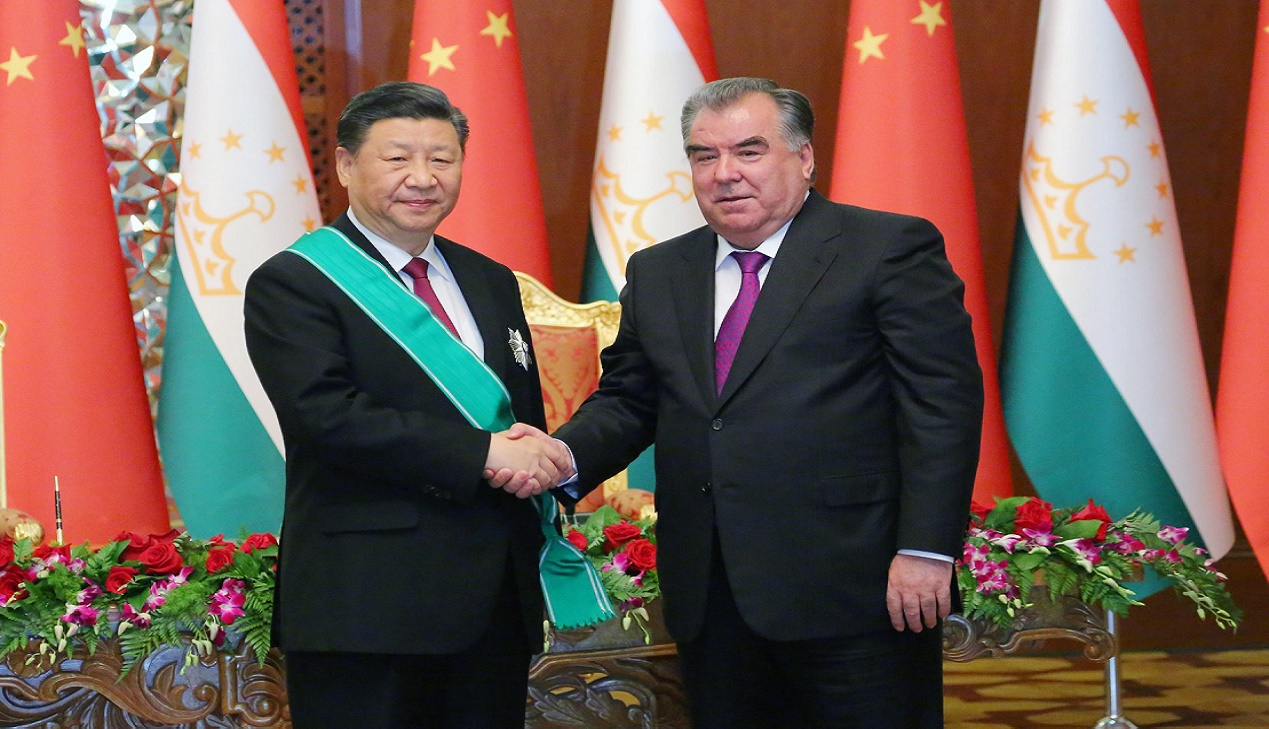



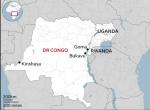
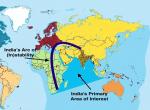




Post new comment